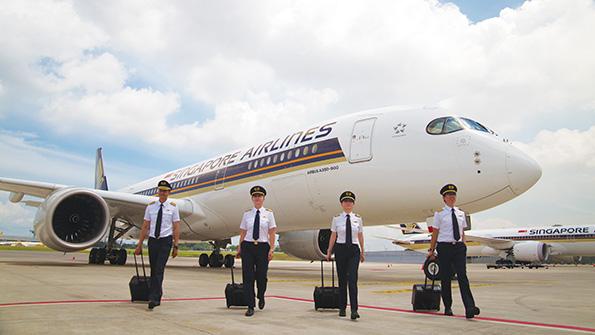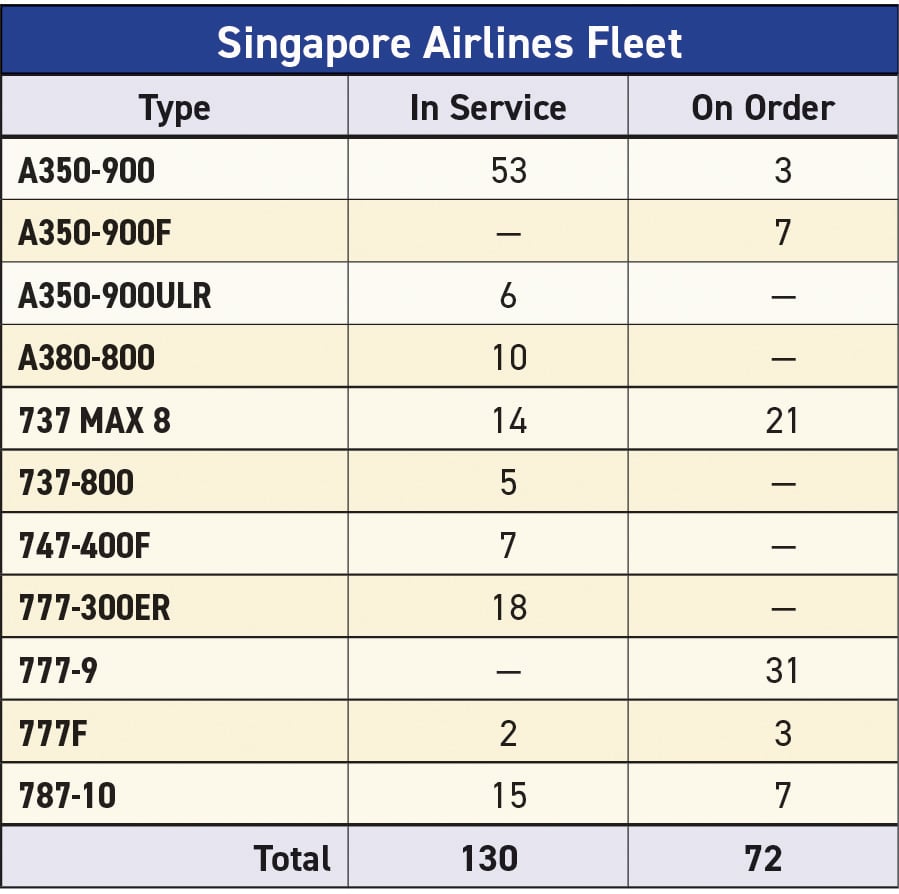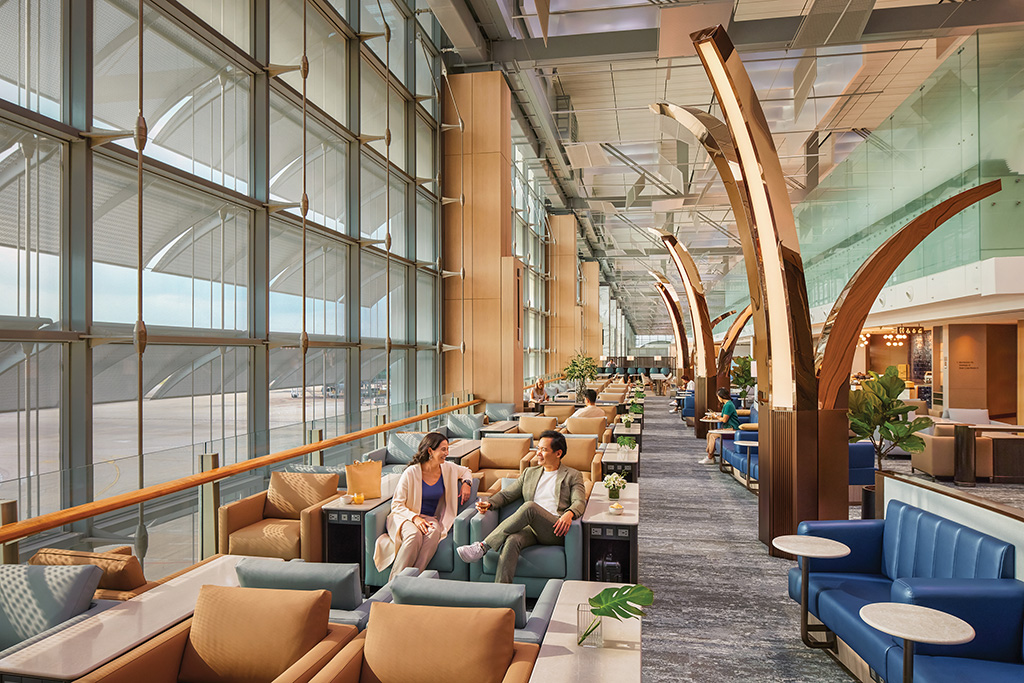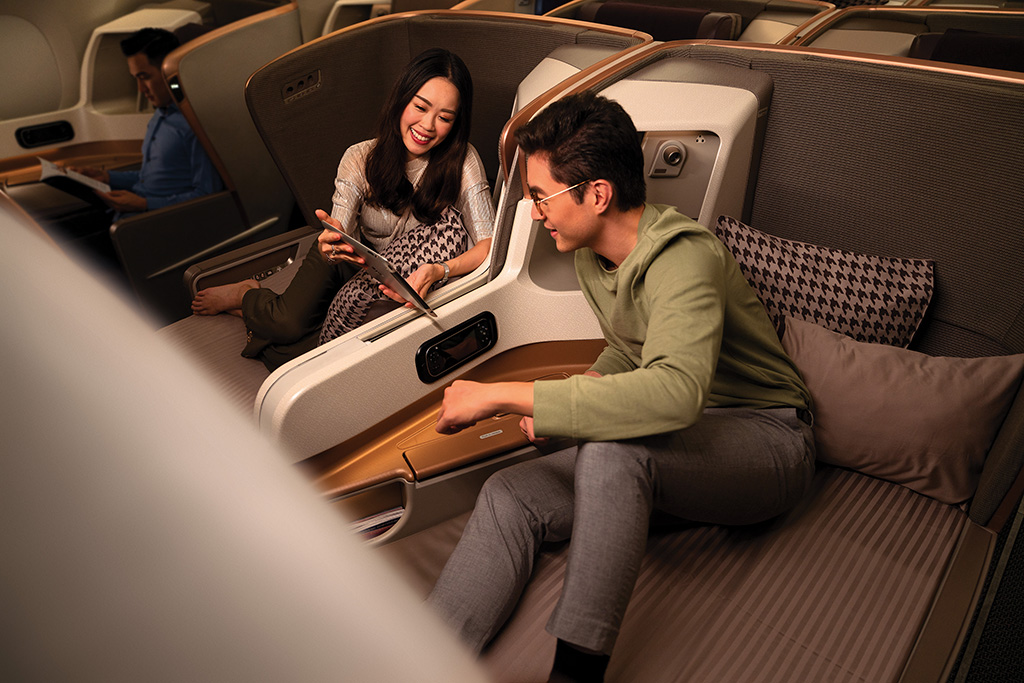2023 ATW Airline of the Year: Singapore Airlines

In the worst weeks of the COVID pandemic crisis, the Singapore Airlines Group was carrying just 11,000 people each month versus 3.4 million in January 2020. As an international hub carrier with no domestic market, the closure of international borders was an existential threat.
The airline’s management team, led by CEO Goh Choon Phong, responded rapidly and decisively. The company raised billions of dollars in fresh liquidity and launched multiple innovative projects to keep staff and customers engaged even when they couldn’t fly.
This all helped keep the company on a strong footing to be ready to reenter the market rapidly when borders reopened. And Singapore Airlines (SIA) did exactly that, quickly restoring passenger capacity, posting record passenger load factors, and implementing a 2023 summer schedule that takes it above pre-pandemic levels in the Americas, Europe and South Asia markets.
The airline also kept a strong focus on long-term strategic initiatives, including forming deeper airline partnerships, and a multi-hub strategy that leverages its Indian joint venture with Tata Group. And with a fleet age of just over six years, SIA operates efficiently and sustainably.
Throughout, this Star Alliance carrier maintained a firm commitment to the three pillars of its brand promise: product leadership, service excellence and network connectivity. And this year, SIA and its LCC subsidiary Scoot have come back even stronger with record profits.


Nimble Ethos
SIA management put their nimble and flexible ethos to the ultimate test as soon as the pandemic took hold, responding quickly and decisively to both ensure the airline’s immediate survival while maintaining a focus on long-term strategic goals that would ultimately restore growth and profitability when borders reopened.
As a first step, the company raised a total of S$22.4 billion ($16.8 billion) in fresh liquidity, including S$15 billion via a Rights issue with the support of shareholders. It was the largest amount raised by any airline during the pandemic.
In an interview with ATW editors at the company’s training academy in Changi, Goh talked about the importance of that huge ask of shareholders, who responded positively and quickly.
“To go to our shareholders and say we want $15 billion, there could have been many reactions, but certainly there was going to be a great amount of scrutiny,” he said. “But the reason why we went for that amount was precisely because we didn’t know how long this whole crisis would take. And we wanted to have enough money to assure not just the market, but also our own people so everyone could focus on both handling the crisis itself and on preparing for a recovery.”
Management also reached out to suppliers, including Airbus and Boeing, to renegotiate contracts, defer payments and cut costs across the board. Collaborating with unions, management convinced staff to take pay cuts of between 10% and 35%, with management taking the biggest cuts. Board members also took cuts to their fees in solidarity.
In a remarkable innovation, SIA also helped its cabin crew staff to find external roles that supported Singapore’s fight against COVID-19, such as assisting at local hospitals, while retaining them on the payroll. Almost 2,000 cabin crew benefited from those arrangements, which evolved into SIA Ambassador programs. In 2020 and 2021, the company waived its exclusivity clauses, allowing staff to work at other companies to supplement their incomes. Another 1,000 staff took this option up, allowing them to make up for lost income because of their low flying hours. These measures, combined with the Singapore government’s broader support schemes for the aviation industry, meant that SIA was able to retain most of its people.
“There were huge concerns about how cabin crews were going to sustain their own family commitment and financials,” Goh said. “We recognized that the impact was disproportionately higher on the cabin crew because they depended on flying to generate their allowance. And that’s a huge part of their pay and they needed that money to support their families. We reached out, for example, to hospitals and we made arrangements for our crew to help the nurses take care of patients. That allowed us to first retain the team and their capabilities because they were still our staff. And our people, our crew, got to learn new skills. And because it was part of the nation’s effort to combat COVID, it generated a lot of good in the public.”
In a customer-engagement innovation, SIA offered dining experiences on a parked Airbus A380 that were hugely popular, and even did meal delivery service to local frequent flyers.
Goh recalled with pride the customer reaction to those offerings. “We invited customers to come and dine as if they were flying somewhere. The plane didn’t even take off, it wasn’t even flying to nowhere, so it wasn’t a joyride thing. And we saw this amazing response from the public who really missed interacting with us. We were planning to have only two sessions; we ended up organizing 15,” he said. “And the interactions between our people and our customers were fantastic because they were also telling our staff how much they missed us and how much they wanted to continue to support us in a very difficult environment for us. So that was morale boosting.”
The Future
All along, management kept an eye on the future. The fresh liquidity enabled SIA Group to make strategic investments. These included orders placed in February 2021 for additional Boeing 777-9s and for the all-new Airbus A350F freighter, for which SIA will be the launch customer, a year later.
SIA also launched new industry-leading narrowbody cabin products on its Boeing 737 MAX 8s that elevate the onboard experience on the airline’s shorter routes. A new regional economy-class meal concept was rolled out offering more choices and more sustainable options.
In addition, all-new lounges at Singapore Changi Airport Terminal 3 were opened in May 2022. The three adjacent but separate lounges are impressively spacious with multiple food and beverage options, conference rooms, private sleep rooms and separate areas for families with young children.

Partnerships
Partnerships have always been important to SIA, but never more so than through the crisis, when the airline deepened its relationships with Southeast Asian carriers such as Malaysia Airlines, Garuda Indonesia and Thai Airways. This has increased the number of codeshare destinations within the network, resulting in higher traffic to respective hubs and more options for customers.
SIA also strengthened its collaboration with long-time Star partner United Airlines, opening up more domestic points with United’s US network, and more points across SIA’s network in Southeast Asia and Australia.
“Partnership has always been important for us,” Goh noted. “That’s why we had a route JV with Lufthansa well before COVID. We had that with Scandinavian Airlines. We have a very strong route JV with Air New Zealand. All of this is a recognition by us based in Singapore that we are not able to reach all the markets around the world. We need partners to work together so that we can offer greater benefits for all our customers.”
The company also enhanced its multi-hub strategy, agreeing with Indian company Tata to merge its joint venture Vistara with Air India for a 25.1% stake in the enlarged Air India group post-completion. The merger, for which SIA is hopeful regulatory approval will come in early 2024, would bolster SIA’s presence in India, allowing it to continue participating directly in a large and fast-growing aviation market. It will also bring about significant synergies leveraging Air India’s valuable slots and air traffic rights at domestic and international airports that are not available to Vistara.
“India is already the third-biggest travel market in the world, and it is projected to be the third-largest economy in the world by the end of the decade. Travel demand is expected to double within the next 10 years. So you can see why it is such an important strategic initiative for us,” Goh said.

Long-term Thinking
Goh pointed to LCC subsidiary Scoot as an example of the company’s long-term thinking. Scoot has orders for the new Embraer E2 jet, he pointed out.
“That’s going to give us a lot of flexibility in serving secondary points in Southeast Asia or even up to parts of China and India. It will increase connectivity and attractiveness of connecting on the Singapore Airline’s group network,” he said.
“If you look at it, a lot of the opportunities that we’re benefiting from now were built pre-pandemic. This whole thing about having a portfolio whereby we have both the full-service and the LCC were things that we started 10 years ago. And during that period, we streamlined our propositions in those two areas. For example, we acquired 100% of Tigerair; we also integrated SilkAir. So now it’s very clean. We have an LCC, we have full-service, and we can focus on how to facilitate greater connectivity.”
Sustainability
On aviation sustainability, Goh makes clear his view that this is not a competitive issue because the industry as a whole must be sustainable.
“We should be thinking about a solution that is viable for the industry and not just for SIA. I truly think so. We have got to change the public perceptions of flying and aviation as a whole; it’s not good enough just to do it for SIA,” he said.
“It is very clear to us that the most effective and immediate way to reduce carbon emissions is through a modern, new-technology fleet. Our fleet age is just over six years. The industry’s fleet age is more than 15 years. Relative to operating an aircraft that’s a generation older on the same mission, you can reduce emissions by about 25%. That’s significant.”
Sustainable aviation fuel (SAF) is the pathway to the industry goal of being carbon net-zero by 2050, Goh says, but that hinges on the availability and acceptability of fleet stock around the world.
“That is a big challenge for everybody. But in the meantime, we are the first airline in Southeast Asia that uplifted SAF blends—both for Scoot and SIA operations—and we’ll continue to look at what else we can do to increase our intake for SAF,” he said.
Profit and Capacity Rebuild
By being nimble and flexible, SIA Group passenger capacity stood at an average of around 76% of pre-pandemic levels by the end of 2022. In comparison, the average for the Asia-Pacific region was around 38.6%. The SIA Group carried 11.4 million passengers in the six months to Sept. 30, 2022, up 13-fold from a year before. This remained robust in October 2022 (2.27 million) and November 2022 (2.4 million). Load factors reached a record 83% for the first half of FY2022/23, leading to SIA Group posting an operating profit of S$1,234 million for the half-year, marking a spectacular turnaround from the depths of the pandemic.
Throughout its most challenging period ever, SIA has stayed true to core principles while also being highly creative and adaptive at addressing those challenges. It’s a hallmark of this company.
“In some sense, Singapore Airlines has always looked beyond solving immediate problems. This particular crisis just made that very obvious. So even when we were trying to handle the crisis and trying to survive, we were already thinking about recovery and making sure that we could capitalize on that recovery and make us stronger than before,” Goh said. “As an organization we’re definitely more resilient, more innovative and more agile. And that agility is very important in a market where there are lots of uncertainties.”
In recognition of its resilience, innovation and indomitable spirit, the 2023 ATW Airline of the Year Award goes to Singapore Airlines.




